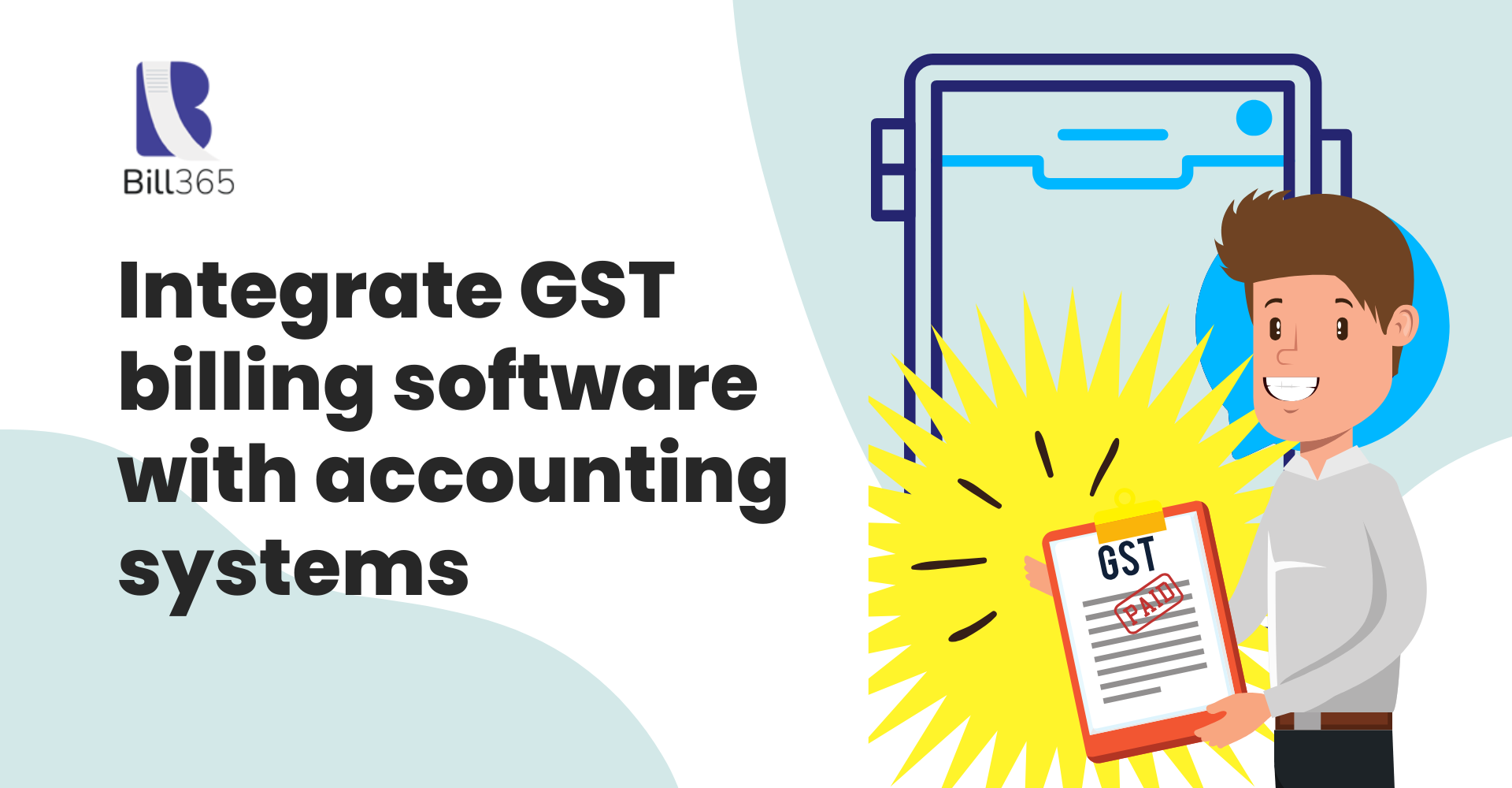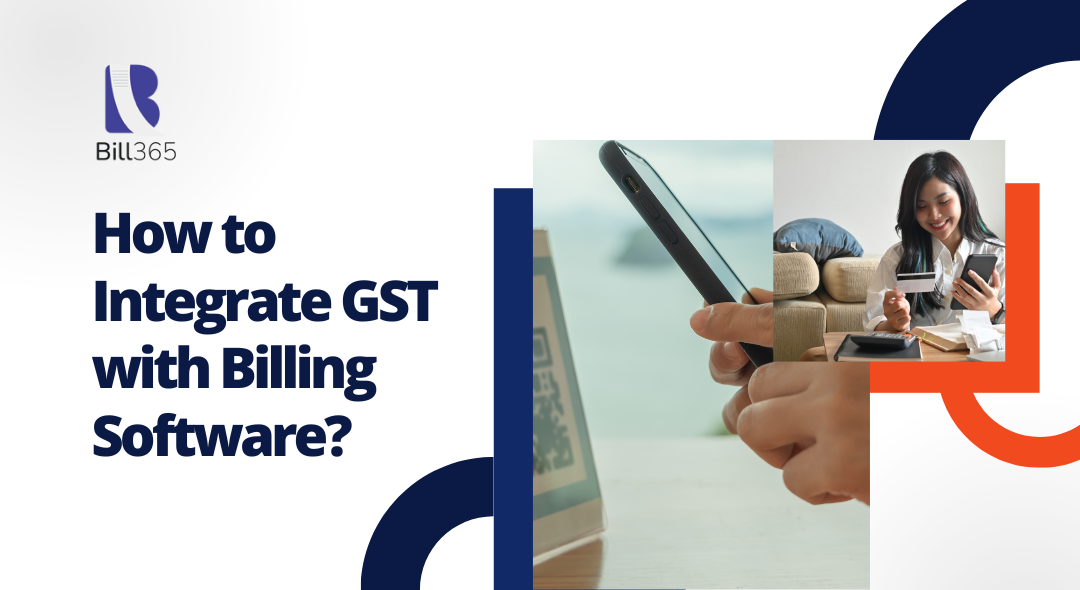
How to integrate GST billing software with accounting systems
Goods and Services Tax (GST) has transformed the way businesses handle indirect taxes in India. Introduced to simplify taxation and promote transparency, GST mandates accurate invoicing and regular filing, making compliance critical for all businesses. One effective way to maintain GST compliance while streamlining processes is to integrate GST billing software with accounting systems. This integration allows businesses to automate data synchronization between billing and accounting functions, reducing errors, saving time, and ensuring seamless compliance with GST requirements.
Using a single platform to manage billing, tax calculations, and accounting enables businesses to have clear financial records, automate GST filings, and improve operational efficiency. Whether for a small business or a large enterprise, adopting a system that combines billing and accounting processes with GST compliance provides clear advantages. This article will cover the importance of GST integration, its benefits, and practical steps to integrate GST with billing/invoice software.
Understanding the Significance of GST Integration
With GST, every taxable transaction requires accurate reporting and timely tax payments. Manual management of these transactions often leads to errors, missed filings, and compliance issues. For this reason, the ability to integrate GST billing software with accounting systems has become essential for businesses aiming to streamline operations. This integration simplifies data handling, reduces the need for manual data entry, and enhances the accuracy of financial records.
GST integration automates the process of data transfer between billing and accounting tools, ensuring that each transaction recorded in the billing software is accurately reflected in the accounting records. With automated synchronization, all GST-related transactions are updated in real-time, providing a consolidated view of tax liabilities, invoicing, and financial records. This automation improves data consistency and reliability, empowering businesses to make informed decisions based on accurate financial data.
GST Integration Benefits
Integrating GST billing software with accounting systems provides substantial GST billing software benefits, helping businesses operate more efficiently and meet tax requirements effortlessly. Here are some of the major benefits:
1. Increased Accuracy and Error Reduction
One of the main advantages of integration is its impact on data accuracy. When GST billing software is directly linked with accounting systems, data entry becomes automated, significantly reducing the chance of errors. Mistakes in tax calculations, invoice details, or reporting figures are common in manual entries. However, integration allows the data to flow automatically from one system to another, ensuring the information is consistent and correct across both platforms. This accuracy is especially important for maintaining compliance and generating reliable financial reports.
2. Compliance and Timely Filing
GST compliance requires businesses to submit periodic reports and maintain detailed records of all taxable transactions. Integrating GST billing software with accounting systems helps automate these reporting processes, making it easier for businesses to submit accurate returns on time. With integration, compliance checks become automatic, and businesses can generate tax reports in GST-compliant formats, avoiding penalties related to missed or incorrect filings.
3. Real-Time Financial Visibility
By connecting billing and accounting systems, businesses gain access to real-time financial insights. This is essential for monitoring cash flow, managing expenses, and assessing tax liabilities. Real-time data enables better decision-making and facilitates agile responses to market changes. Since financial data is continuously updated, management can rely on current information to make informed strategic decisions, such as budgeting or forecasting.
4. Time and Cost Savings
Integrating GST billing software with accounting systems saves both time and money by eliminating
repetitive manual tasks. Instead of manually updating records, employees can focus on higher-value tasks, such as customer service or business development. The automation also lowers the administrative burden and reduces the need for resources dedicated to data entry and error correction, making the process cost-effective, especially for small and medium-sized businesses.
How to Integrate GST with Billing Software
Integrating GST billing software with accounting systems may appear complex initially, but following a structured approach can make it manageable. Here are practical steps for effective integration:

1. Understand Your Business Requirements
Before you begin integrating GST with billing software, it’s crucial to assess your business needs. Determine the types of transactions, volume, and the frequency of GST filings required. Decide on the level of automation you want, such as automatic tax calculations and filing options. Understanding your business requirements will help you choose the right integration method and avoid unnecessary features or costs.
2. Choose Compatible Billing and Accounting Software
Selecting the right billing and accounting software is fundamental to successful integration. Check if your existing software supports GST features and can integrate seamlessly. If your current software lacks GST functionality or compatibility, consider switching to software with built-in GST compliance features. Many billing platforms are specifically designed to accommodate GST calculations and reporting. Businesses that integrate GST billing software with accounting systems improve compliance, reduce administrative workload, and gain real-time financial insight.
For example, if you’re using a well-known accounting platform, ensure your billing software is compatible with it or can integrate through third-party applications or plugins.
3. Verify GST Compliance in the Software
Once you have selected compatible software, verify its GST compliance capabilities. Ensure the billing or invoicing software can handle essential GST functions like:
- Setting and applying the correct GST rates
- Generating GST-compliant invoices
- Recording GST transactions accurately
- Classifying items based on GST tax categories
- Ensure the software is updated for the latest GST rules and has a clear interface for managing GST configurations.
4. Configure GST Rates and Tax Codes
Next, set up your GST rates and tax codes within the billing software. Proper configuration of GST settings is essential to prevent discrepancies in tax calculations. Most billing software will allow you to set multiple tax rates for different product categories or services.
Set up tax codes for CGST (Central Goods and Services Tax), SGST (State Goods and Services Tax), IGST (Integrated Goods and Services Tax), and any other applicable taxes. Accurate configuration here ensures all invoices are correctly calculated and comply with GST guidelines.
5. Enable GST-Compliant Invoice Templates
A key aspect of integrating GST with billing software is generating GST-compliant invoices. The invoice format must meet GST standards, including fields for the customer’s GSTIN (if applicable), HSN (Harmonized System of Nomenclature) codes for goods, SAC (Service Accounting Codes) for services, and a breakdown of taxes.
Use your software’s invoice templates, or create custom templates that align with GST requirements. This ensures each invoice is legally compliant and easier to reconcile for GST filing.
6. Automate Data Syncing with Accounting Software
For accurate tax reporting, your billing software should sync data automatically with accounting software. Automation helps prevent data inconsistencies between invoicing and accounting records, reducing the risk of manual errors.
Most modern billing software comes with options for direct integration or APIs to sync with popular accounting platforms. Alternatively, you can use middleware that connects both systems to automate the flow of financial data.
7. Test the Integration with Sample Transactions
Testing is crucial to confirm that GST calculations, invoicing details, and tax codes sync correctly. Conduct sample transactions and verify that each transaction’s tax details reflect accurately in both the billing and accounting software.
Testing will highlight potential errors or mismatches in data, allowing you to correct these before going live. Check if taxes are calculated correctly, invoices display GST details accurately, and each transaction reflects accurately in the accounting system.
8. Set Up Automated GST Filing (if Available)
Many billing software platforms now offer automated GST filing features. If this option is available in your software, enable it to save time and effort in manual filings. Automated filing streamlines the compliance process, ensuring your filings are on time and error-free.
Most software will require linking with your GST portal account for direct filings. Make sure the software is properly configured to submit accurate data for GSTR-1 (outward supplies), GSTR-3B (monthly summary), and other required returns.
9. Establish Data Security and Backup Protocols
Since GST integration involves handling sensitive financial and tax data, securing this information is vital. Enable data encryption and user authentication features within the billing and accounting software to protect against unauthorized access.
Regularly back up data to secure locations, whether on a cloud server or an external storage device, to prevent data loss due to technical issues or cyber threats. Data security ensures compliance and prevents disruptions during audits or filings.
10. Train Employees on the Integrated System
Once the GST integration is complete, ensure that relevant team members are trained to use the new system. Training should cover:
- Generating GST-compliant invoices
- Applying the correct GST rates and tax codes
- Accessing real-time reports and data insights
- Handling automated GST filings (if available)
- Educating employees on the new integrated system will ensure they understand GST compliance requirements and can maximize the software’s capabilities for efficient tax management.
Conclusion
Adopting systems that enhance efficiency and accuracy is crucial to succeed in today’s digital business landscape. When businesses integrate GST billing software with accounting systems, they achieve better compliance, reduce administrative workload, and gain real-time financial insights. With automation reducing errors and streamlining tax compliance, integrated GST systems help businesses focus on growth instead of manual tax filing and reconciliation.
Integrating GST billing software with accounting systems simplifies tax management, enhances data accuracy, and provides a comprehensive solution for meeting GST obligations. By following the integration steps, businesses can set up a system that aligns with GST requirements and boosts operational efficiency. That’s why having efficient billing software is important. In the long term, GST integration helps maintain compliance and contributes to informed decision-making and business growth.
FAQs
1. Which software is used for GST billing?
Several software options support GST billing, including Tally ERP 9, Zoho Books, QuickBooks, and Bill365. These platforms offer GST-compliant invoicing, tax calculations, and return filing features. Each software ensures accurate tax management and streamlined billing, making it easier for businesses to comply with GST regulations and maintain organized financial records.
2. What is the meaning of GST accounting software?
GST accounting software refers to digital platforms designed to manage Goods and Services Tax (GST) compliance. It helps businesses automate GST billing, invoicing, tax calculations, and filing processes. By synchronizing financial records with GST requirements, this software reduces manual errors, simplifies tax reporting, and ensures compliance, offering an efficient solution for businesses managing GST obligations.
3. How do you use GST in accounting?
Using GST in accounting involves setting up GST rates, issuing compliant invoices, and recording taxable transactions. Accountants track GST collected on sales and paid on purchases, categorizing them under specific tax codes. At month-end, they reconcile GST accounts, generate reports, and file returns using accounting software, ensuring proper tax handling and regulatory compliance.
